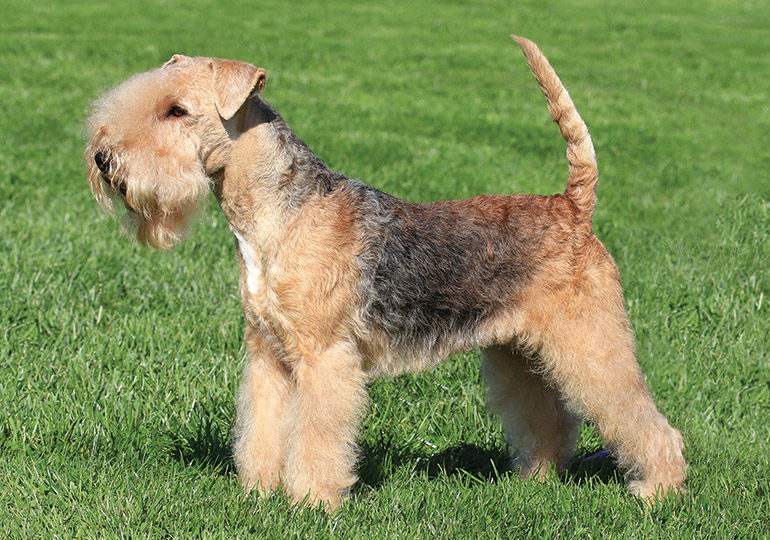Breeds
Lakeland Terrier

GROUP 2 - TERRIERS
History
As one of the earliest Terriers (Latin derivation of earth), dating from the 1700s, this "earth" dog is a descendant of the old English Black and Tan and Fell Terriers. The Lakeland's original service was "going to ground" on the farm in hunt for vermin. Its size and energy make it popular as a hunter in hard to reach places; the breed is among those eligible for competition in sanctioned Earthdog trials. (1)
In the Lake District of the UK, the mountainous, rocky terrain is unsuitable for hunting fox on horseback and foxes were hunted on foot. It has been suggested that the Lakeland Terrier's great stamina derives from running all day with the hounds, unlike his close cousin, the fox terrier, who would have been carried in a saddle bag to be released only when the fox had gone to earth. (1. & 3.)
Appearance
Smart, workmanlike, well balanced and compact (2)
Temperament
Friendly, bold, and confident. (4) Shyness is very atypical, as is aggressiveness. Very intelligent and independent minded, they are quick to learn and easy to train though Lakelands often exhibit 'selective deafness' when their interest level is aroused. The Lakeland is quite receptive to crate training. As with most terriers, the Lakeland is energetic; daily exercise and playtimes are a must, lest this active dog seek other outlets for their energy, with undesirable results for the owner. (3)
Sizes
Average Weight: Dogs 8 kg (17 lbs)
Bitches 7 kg (15 lbs)
Height: not exceeding 37 cms (14.5 ins) at shoulder. (2)
In Conclusion
Now you know a little about the Lakeland Terrier and have decided this is the dog for you, or you would like more information, please make contact with the breed club or your State controlling body for purebred dogs. They will be able to give you information about available puppies and also suggest dog shows where you can see the breed and speak to breeders. In this way you will gain a better perspective of the Lakeland Terrier and its needs and whether this breed would suit your lifestyle.
References
- Wikipedia.org
- DOGSAUSTRALIA.org.au
- Alderton, David (1993). Dogs
- The Kennel Club Breed Information Centre, Lakeland Terrier
Photo: Radomír Režný | Dreamstime.com


